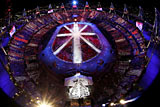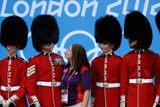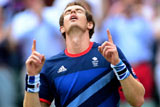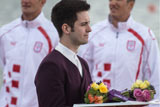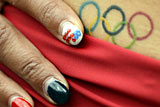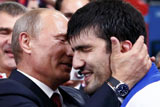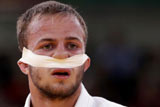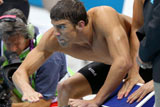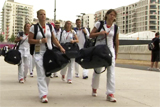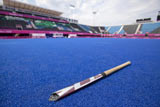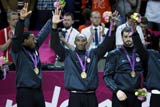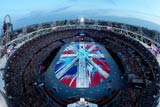Olympic torch designers reveal design secrets
Updated: 2012-07-23 19:31:27
( Xinhua)
|
|||||||||||
LONDON - One of the iconic images of any post-war Olympic Games is the Olympic torch, and the London Olympics like many before it has come up with a design that says something about these 2012 Games.
The 2012 torch is now carrying the flame through the streets of London before its starring role in the Olympic Stadium opening ceremony on Friday.
It was designed by two young British designers, Edward Barber and Jay Osgerby who set up their eponymous Barber Osgerby practice specializing in furniture and industrial design in 1996, after completing post-graduate studies in architecture at London' s Royal College of Art (RCA).
Xinhua visited the two designers at their practice base, in a converted and whitewashed Victorian warehouse in the Shoreditch area of London, an area once dominated by trades like printing but which is now home to clubs, art galleries, restaurants and creative businesses like Barber Osgerby.
Edward Barber, the taller of the two and with the darker hair, explained that the Olympic torch brief was complex.
"The main title for our brief was to produce 'a torch for our time'. It was a tough one. The most difficult thing is to produce an object that is engaging, appealing, represents what it needs to represent, and because there are no exact criteria for that."
Partner Jay Osgerby said, "We only really do contemporary designs. We tend to design things that we hope will stand the test of time. But for this one it had to be imbued with meaning."
The two were given a brief to design the torch. The brief turned out to be the size of a substantial book.
This included all the plans for previous flames, all the climate details for Britain in the summer, the history of the Olympics, and so on.
"The brief said it had to be engaging for Londoners, the British public, and the world watching. Luckily they only gave us 10 days to design it," said Barber.
"If they had given us two years we would have spent every minute of two years on it, and would not have done any better. It' s because there was so little time, that we became very focused and eliminated periphery stuff and we got straight into it."
The 10 days were intense, working 24 hours after the basic idea had been developed, said Osgerby.
Remarkably the torch as we see it now was the first design they came up with; "the only design we came up with," said Barber.
Creative Design
There were several constraints on design.
"A lot of the runners are quite young from 12 to 24 years old, so it couldn' t be too high," said Jay Osgerby.
"For Olympic flames, it' s fairly average height. Some had been bigger. The earlier ones from the 1940s tended to be quite small," he added.
There are several interesting things about the design.
First, its shape and construction come out of Barber Osgerby' s now-established creative style. The torch seems to be a plane that is bended into its iconic shape and then folded and tucked down into itself from the hole at the top where the flame appears.
This bending and folding of planes comes from Barber Osgerby' s work in furniture design.
Second, the skin of the torch is very strong but also light. It' s made from aluminium, and is perforated with 8,000 holes -- each hole representing one of the bearers of the flame as it makes its journey around the British isles.
Third, when you hold the torch, it feels right in your hand; it feels as though it should be there, that it was made to be a tool. Which is what it is, but as the pair say, and as the world expects, it is a lot more than that too.
It' s also an icon of the London Games; an example of British creativity; a work of art; a beautiful thing; an item that says 'I' m special' ; an item that earns a reaction of awe from those who see it.
People pick it up and turn it round like a piece of jewellery, said Barber.
Shared DNA
From the beginning, said Osgerby, they wanted to design something that was very simple and all made from one material. They wanted it to be a tool, rather than a trophy, which some previous torches had been, he added.
The mouth of the torch is also triangular in shape, highlighting a whole series of Olympic trios.
And the mouth of the torch echoes other themes in their furniture, which has often used layers of material, like wood, wrapped into a shape around an aperture.
"Our torch and our furniture share quite a lot of DNA, really, " said Barber.
So, where will the pair be on the night of the Olympic opening ceremony?
They look at each other, and with a wry experience, and with a little puzzlement they confess that when their torch is performing its final key function at the climax of the ceremony they won' t be there.
"We haven' t got tickets for the opening ceremony, and nobody gave us any," said Osgerby.
Just like the rest of us, the two Olympic torch designers are going to be at home watching events on the television.
Medal Count |
||||
| 1 | 46 | 29 | 29 | |
| 2 | 38 | 27 | 22 | |
| 3 | 29 | 17 | 19 | |
| 4 | 24 | 25 | 33 | |
| 5 | 13 | 8 | 7 | |
| 6 | 11 | 19 | 14 | |

